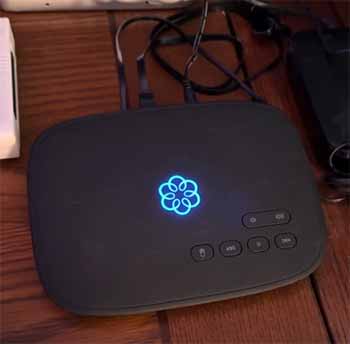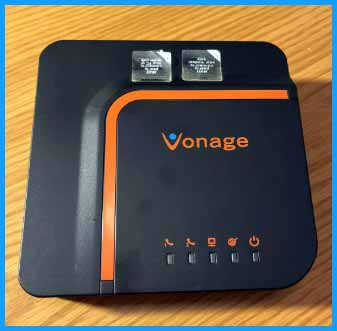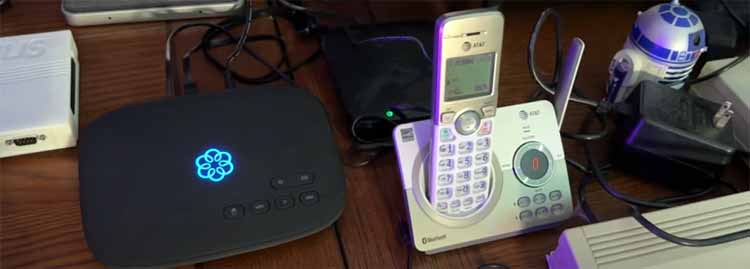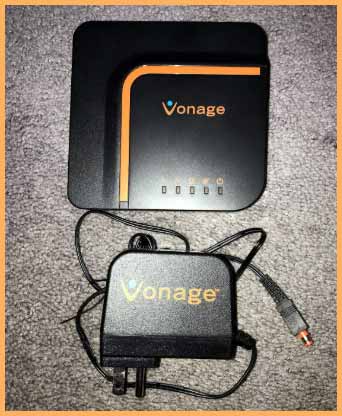I’ve been on a mission to figure out which VoIP service—Ooma or Vonage—truly delivers the goods for someone like me, a regular user who just wants reliable calls, useful features, and a price that doesn’t sting.
In this article, I’m unpacking my experience with both, weighing their pros and cons, and breaking it all down so you can decide what’s best for your own needs.
Whether you’re a small business owner, a remote worker, or just someone tired of overpriced phone bills, stick with me—I’m laying out the real scoop on these two heavyweights, complete with a comparison table, detailed analysis, and a handy FAQ at the end.
A Brief Comparison Table
| Feature | Ooma | Vonage |
| Starting Price | $19.95/user/month (business) | $19.99/user/month (business) |
| Free Plan | Yes (residential, with hardware) | No |
| Trial Period | 30 days | 14 days |
| Call Quality | HD voice, crystal clear | HD voice, solid reliability |
| Video Conferencing | Up to 100 participants (Pro Plus) | Up to 200 audio, 25 video |
| Integrations | Limited (e.g., Salesforce, Google) | Robust (e.g., Slack, Microsoft) |
| Customer Support | 24/7, highly praised | Weekdays, mixed reviews |
| Hardware Requirement | Yes (Telo for residential) | Optional (adapter included) |
| Contract | No annual contract | 1-year contract option |
| Best For | Small teams, home users | Growing businesses, remote teams |
What’s Ooma All About?

Ooma first popped onto my radar with its residential hook: buy the hardware once, and calls are basically free.
That’s the Ooma Telo, a little box that plugs into your internet and phone, turning your broadband into a landline replacement.
For businesses, it’s a different game—Ooma Office starts at $19.95 per user per month, and there’s no freebie option unless you’re just using it at home.
Key Features I Liked
- HD Voice: The sound quality? Unreal. I could hear every word crisp and clear, no crackling or weird echoes. It’s like the person’s sitting next to me.
- Virtual Receptionist: For my small side hustle, this was a game-changer. It answers calls and routes them to the right spot—my “sales” line (aka me) or “support” (also me). Professional vibes without the hassle.
- Video Conferencing: On the Pro Plus plan ($29.95/month), I got video calls for up to 100 people. Screen sharing worked smoothly, and I could even pair it with my Amazon Alexa for hands-free control.
- No Contract: I love flexibility. Ooma doesn’t lock me into a year-long commitment, so I can bail anytime if it’s not working out.
Pros of Ooma
Here’s what sold me:
- Affordable Entry Point: That $19.95 base plan for businesses is packed with over 50 features—call forwarding, voicemail transcription, you name it. For home use, the free-after-hardware deal is tough to beat.
- Stellar Support: I called their 24/7 line once when my Telo acted up, and the rep was patient, friendly, and fixed it fast. Big win.
- Easy Setup: I had it running in 15 minutes. Plug in the Telo, sync it to my Wi-Fi, and boom—calls were live.
- Reliability: Rarely dropped a call. My internet’s decent, but Ooma’s Quality of Service tech prioritizes voice traffic, so it stays solid even when my roommate’s streaming 4K.
Cons of Ooma
But it’s not all sunshine:
- Hardware Dependency: That Telo box? Mandatory for home use, and it’s $99.99 upfront. If it breaks, I’m out of luck until a replacement arrives.
- Limited Integrations: I tried linking it to my Google Workspace, and it worked okay, but options are slim. No Slack or Microsoft Teams here.
- Upsells: Want video or texting? You’re upgrading to Pro ($24.95) or Pro Plus ($29.95). The base plan feels basic if you need more than calls.
- Spotty Support Complaints: I lucked out, but some folks online griped about slow responses. Seems hit-or-miss.
Vonage: The Flexible Contender
Vonage, on the other hand, feels like the cool kid who’s been around the block. It’s got a rep for business solutions, but it also covers home users. Pricing kicks off at $19.99 per user per month for the Mobile plan, scaling up to $39.99 for Advanced. No free tier, but they throw in a 14-day trial to test the waters.
Key Features That Stood Out

- Team Messaging: Premium and Advanced plans ($29.99 and $39.99) include a Slack-like chat feature. I could ping my freelance team without juggling apps.
- AI Virtual Assistant: This thing’s smart. It answers basic questions and routes calls, saving me from playing receptionist all day.
- Video Conferencing: Up to 200 audio participants (25 on video) with the higher tiers. Whiteboarding and emojis made meetings fun, though I wish it had breakout rooms.
- Integrations Galore: Vonage hooks into Salesforce, Slack, Microsoft Teams—pretty much everything I use daily. It’s like it knew my workflow.
Pros of Vonage
Here’s where it shines:
- Customization: I could add features à la carte—call queues for $14.99, virtual fax for $9.99. It’s pricey, but I only pay for what I need.
- Scalability: My team grew from two to five, and Vonage scaled effortlessly. No hardware headaches—just add users.
- Global Reach: Unlimited calls to the U.S., Canada, and Mexico, plus decent international rates. I called a client in Australia for $0.038/minute—pretty sweet.
- API Power: If you’re a coder, Vonage’s APIs let you build custom tools. I’m not, but I can see the appeal for tech-savvy folks.
Cons of Vonage
Not everything’s perfect:
- Contract Trap: That $19.99 price? It’s tied to a year-long contract unless I pay more upfront. I hate being locked in.
- Customer Service Woes: I had a billing glitch once, and their weekday-only support took forever to respond. Online reviews echo my frustration.
- Add-On Costs: Those cool features? They jack up the bill fast. My $29.99 Premium plan ballooned to $50 with a couple extras.
- No Free Tier: Unlike Ooma’s residential freebie, Vonage always costs something. My wallet noticed.
Head-to-Head Comparison of Ooma And Vonage

Now that I’ve lived with both, let’s stack them up and see how they measure.
- Pricing: Who’s Easier on the Bank?
Ooma’s $19.95 base plan feels like a steal for small teams or solo users like me. No contract means I’m not sweating long-term costs. The residential free plan (post-Telo purchase) is a no-brainer if you’re just replacing a home line—taxes and fees are like $5/month tops.
Vonage starts at $19.99, but that year-long commitment stings. Discounts kick in with more users (down to $13.99/month annually), so it’s better for bigger crews. Add-ons, though, can turn a budget-friendly plan into a budget-buster.
For me, Ooma wins on flexibility, but Vonage edges out for scaling teams.
- Features: Who Packs the Punch?
Ooma’s got the basics nailed—call blocking, voicemail to email, virtual receptionist. The Pro Plus video conferencing (100 participants) is solid for small meetings, but it’s light on fancy extras. Vonage, though? It’s a feature beast.
Team messaging, AI assistants, and robust video (200 audio participants) make it feel more modern. If you need collaboration tools, Vonage takes the crown; for simple calls, Ooma’s plenty.
- Call Quality: Can You Hear Me Now?
Both deliver HD voice, and I rarely had issues. Ooma’s Quality of Service tech kept calls smooth even when my internet hiccupped. Vonage matched it with high Mean Opinion Scores—tech jargon for “sounds great.” It’s a tie here; your internet speed matters more than their tech.
- Ease of Use: Plug and Play or Puzzle?
Ooma’s setup was a breeze—15 minutes and I was calling. The interface is straightforward, though the desktop app feels dated. Vonage took a bit more tinkering, especially with integrations, but once I got it rolling, it was smooth.
Ooma’s simpler for newbies; Vonage rewards a little patience.
- Support: Who’s Got My Back?
Ooma’s 24/7 support blew me away—fast, friendly, and effective. Vonage’s weekday-only crew left me hanging once, and online chatter suggests I’m not alone. Ooma’s the champ here, hands down.
- Integrations: Playing Nice with My Tools
Vonage is the king of connections—Slack, Salesforce, Microsoft Teams, you name it. Ooma’s got a few (Google Workspace, Salesforce), but it’s slim pickings. If your workday lives in apps, Vonage is your match.
Real-Life Scenarios: What Worked for Me?
- Small Business Hustle: Running a side gig with two freelancers, Ooma’s $19.95 plan kept costs low and calls clear. The virtual receptionist made me sound legit, and setup was painless. Vonage’s team messaging tempted me, but the contract and add-on costs felt overkill for my tiny crew.
- Remote Team Vibes: When I joined a remote project with five people, Vonage shone. Integrations with Slack and Microsoft Teams kept us synced, and the AI assistant handled client calls like a pro. Ooma felt too basic here—no team chat, no deep app ties.
- Home Phone Replacement: For my apartment, Ooma’s Telo was a dream. One-time $99.99 cost, no monthly fees (just taxes), and Alexa integration for lazy days. Vonage’s home plan ($12.99/month with a contract) worked fine, but I didn’t need the extras.
The Analytical Angle: What’s The Data Say?
| Feature | Ooma Essentials ($19.95/user/month) | Ooma Pro ($24.95/user/month) | Ooma Pro Plus ($29.95/user/month) | Vonage Mobile ($19.99/user/month) | Vonage Premium ($29.99/user/month) | Vonage Advanced ($39.99/user/month) |
| Unlimited Calling | U.S., Canada, Mexico, Puerto Rico | Same as Essentials | Same as Essentials | U.S., Canada | U.S., Canada | U.S., Canada |
| Free Toll-Free Number | Yes, with 500 minutes | Yes, with 500 minutes | Yes, with 500 minutes | No (add-on: $39.99/month) | No (add-on: $39.99/month) | No (add-on: $39.99/month) |
| Mobile App | Yes | Yes | Yes | Yes | Yes | Yes |
| Desktop App | No | Yes | Yes | Yes | Yes | Yes |
| Virtual Receptionist | Yes, basic auto-attendant | Yes, enhanced options | Yes, multi-level menus | Yes, basic | Yes, multi-level | Yes, multi-level |
| Video Conferencing | No | Up to 25 participants | Up to 100 participants | No | Up to 200 audio, 25 video | Up to 200 audio, 25 video |
| Call Recording | No | Yes, on-demand | Yes, on-demand | No (add-on: $49.99/month) | Yes, on-demand (15 hrs) | Yes, on-demand (15 hrs) |
| Team Messaging | No | No | Yes, basic chat | Yes, SMS only | Yes, full team chat | Yes, full team chat |
| Call Blocking | Yes | Yes, enhanced spam block | Yes, enhanced spam block | Yes, basic | Yes, basic | Yes, basic |
| Voicemail Transcription | No | Yes | Yes | Yes | Yes | Yes |
| Integrations | None | Google Workspace, Microsoft 365 | Adds Salesforce, Zendesk | Google Workspace, Microsoft Teams | Adds Salesforce, Slack, HubSpot | All Premium + Zapier |
| Call Queues | No | No | Yes | No (add-on: $14.99/month) | No (add-on: $14.99/month) | Yes |
| Analytics | Basic call logs | Yes, detailed reports | Yes, advanced analytics | No | Yes, basic | Yes, advanced |
| AI Virtual Assistant | No | No | No | No | Yes, basic | Yes, conversational AI |
| Fax Support | Yes, analog fax compatible | Yes | Yes | No | Yes (add-on: $9.99/month) | Yes (add-on: $9.99/month) |
| Contract Requirement | None | None | None | 1-year option (discounts apply) | 1-year option (discounts apply) | 1-year option (discounts apply) |
| Trial Period | 30 days | 30 days | 30 days | 14 days | 14 days | 14 days |
| Hardware Needed | Optional IP phones | Optional IP phones | Optional IP phones | None (adapter optional) | None (adapter optional) | None (adapter optional) |
Alright, let’s break this down a bit. When I first looked at Ooma Essentials, I thought, “Wow, $19.95 gets me unlimited calls to four regions and a free toll-free number? That’s a steal!” And it is—especially if you’re a small operation like my side hustle.
The virtual receptionist was a lifesaver, making me sound like a pro without breaking the bank. But then I hit a wall: no desktop app, no video, no fancy integrations. It’s bare-bones, and that’s fine until you need more.
Stepping up to Ooma Pro, I got the desktop app and video for 25 people—nice for small team huddles. Pro Plus kicked it up with 100 participants and Salesforce integration, which I’d love if I used CRM daily.
But here’s the rub: Ooma keeps it simple, and that’s its strength and weakness. No AI, no deep team messaging—it’s a phone-first system with some extras tacked on.
Vonage Mobile, at $19.99, matched Ooma’s base price but threw in a desktop app and SMS right away. I liked that flexibility—calling from my laptop felt seamless. Premium added video and Slack integration, which I leaned on heavily when freelancing with a remote crew.
Advanced brought the AI assistant, and I’ll admit, it’s cool having a bot handle basic client queries. But those add-ons? Ouch. Call recording for $49.99/month on top of Mobile feels like a cash grab when Ooma bakes it into Pro for free.

Vonage scales better—discounts for five+ users (down to $13.99/month annually) make it tempting for growing teams.
Ooma’s flat rate doesn’t budge, which is great for predictability but less so if you’re adding headcount.
And that 1-year contract option with Vonage?
I’m not a fan—give me Ooma’s no-strings freedom any day.
Call quality’s a tie—both use HD voice, and I rarely had dropouts.
But Vonage’s integrations and team tools give it an edge for remote work, while Ooma’s support and simplicity win for small setups.
You’re choosing between a lean, reliable workhorse (Ooma) and a feature-packed, pricier thoroughbred (Vonage).
What’s your vibe—keep it tight or go all-in?
Who Wins?
After wrestling with both, I’m torn but leaning. Ooma’s my pick for small setups or home use—cheap, reliable, and no strings attached. Vonage wins for growing teams or tech lovers who need integrations and scalability, though you’ll pay for it in dollars and commitment.
You? Think about your priorities. Need a no-fuss lifeline? Ooma’s got you. Want a powerhouse for remote work? Vonage is calling. Either way, you’re ditching those old-school phone bills for something smarter.
Frequently Asked Questions (FAQ)
It depends. Vonage beats Ooma for integrations, team tools, and scalability, but Ooma’s cheaper, simpler, and has better support. I’d say Vonage for bigger teams, Ooma for small or home use.
Sort of. For home use, you buy the Telo ($99.99), then it’s free except for taxes and fees (around $5/month). Business plans start at $19.95/month—no free ride there.
Yes, for business—$19.95 to $29.95 per user. For residential, it’s just taxes and fees after the hardware purchase.
I’d point to RingCentral. It’s pricier (starts at $20/month), but you get top-tier security, integrations, and video conferencing that outshine Vonage’s offerings.
Final Thoughts
So, here we are—you and me, sorting through the Ooma vs. Vonage showdown. I’ve laid out my take: Ooma’s your budget-friendly, no-drama pal, perfect for keeping it simple at home or with a small crew.
Vonage steps up if you’re ready to scale, integrate, and flex some tech muscle, though it’ll cost you more in cash and commitment.
Pick what fits your life—whether it’s Ooma’s ease or Vonage’s power, you’re stepping into a smarter way to connect. Let “Game of Thrones” might have dragons, but these VoIP champs have the real magic: affordable, reliable calls.
What’s your choice? Let me know!
